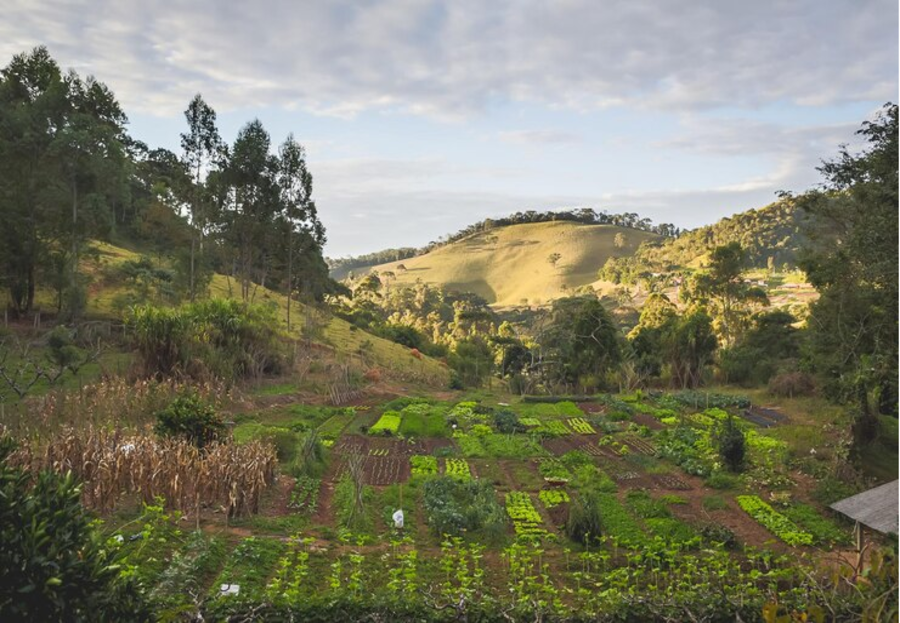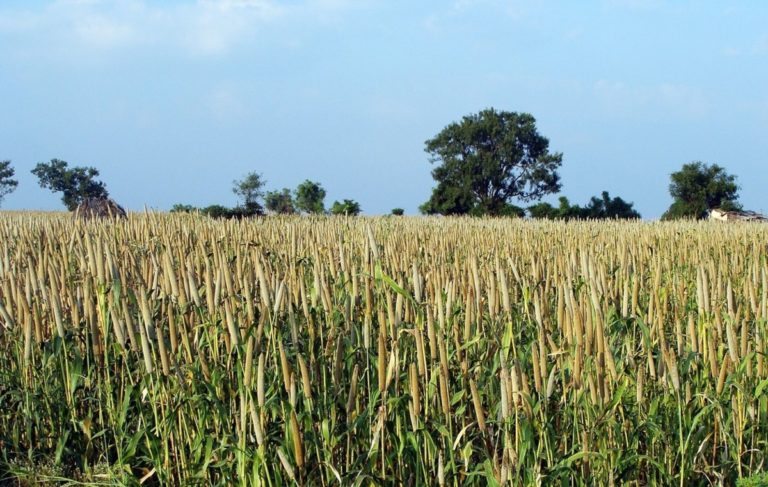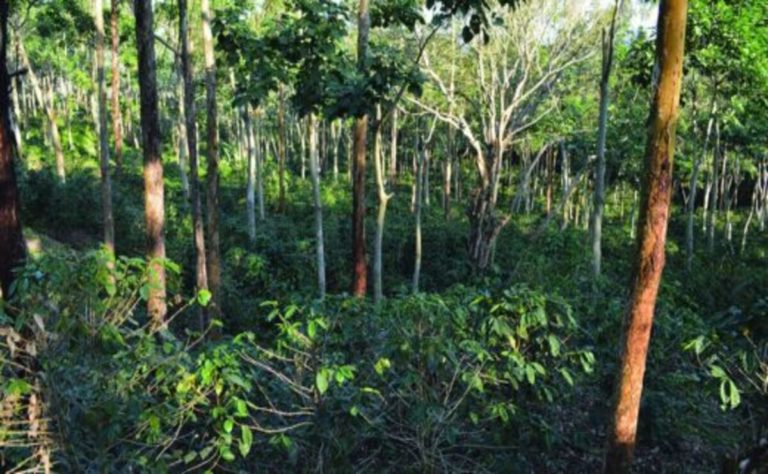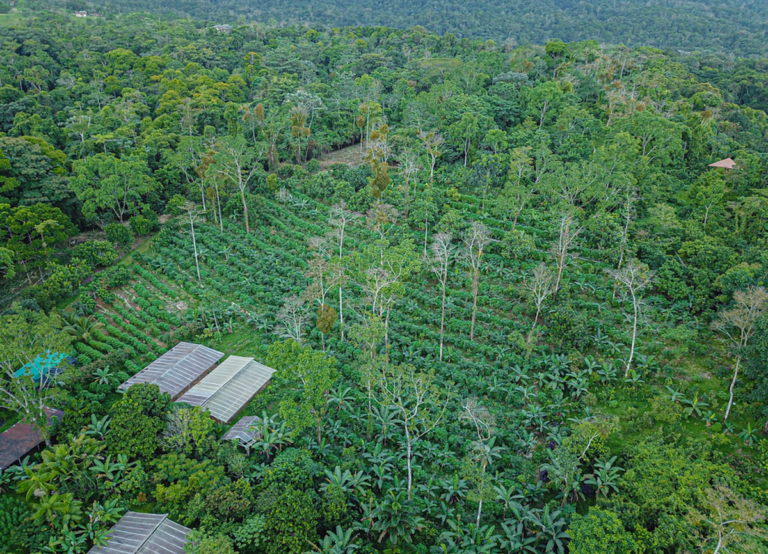Agroforestry: The Future of Sustainable Agriculture
Agroforestry is a way to manage land that involves putting trees, crops, and/or animals on the same land in a way that helps them all and keeps production going for a long time.
Definition of Agroforestry
Agroforestry is a land management practice that combines the cultivation of crops and trees in a way that optimizes the benefits of both systems. It involves the integration of trees and shrubs into agricultural landscapes, in order to create a more diverse, productive, and sustainable land use.
Agroforestry can involve a range of different practices, from planting trees along the edges of fields to intercropping trees and crops on the same piece of land. The goal of agroforestry is to create a mutually beneficial relationship between trees and crops where each helps the other grow and thrive.
Types of Agroforestry Systems
There are several different types of agroforestry systems, each of which involves a different combination of crops and trees and serves different purposes. Some of the most common types of agroforestry systems include:
- Silvopasture: This type of agroforestry involves integrating trees and pasture for livestock grazing. Trees provide shade for livestock, reducing heat stress and improving animal health, and also help to conserve soil and water.
- Alley Cropping: This type of agroforestry involves planting crops in rows between rows of trees, creating alleys. The trees help to control the microclimate, stop soil erosion, and improve soil fertility, while the crops benefit from more light, less competition for water and nutrients, and better soil structure.
- Forest Farming: This type of agroforestry involves growing crops within a forest setting, taking advantage of the benefits provided by the trees. Forest farming can involve growing crops such as ginseng, shiitake mushrooms, or medicinal herbs, or it can involve intercropping crops with trees.
- Homegardens: This type of agroforestry involves integrating a variety of crops, trees, and livestock in a small-scale system, typically around a household. Homegardens are common in tropical regions and provide a diverse range of food, fuel, and other products for household consumption.
- Windbreaks: This type of agroforestry involves planting rows of trees around fields or along roads to reduce wind erosion and improve microclimate conditions for crops. Windbreaks can also provide habitat for wildlife, increase carbon sequestration, and improve water quality.
In conclusion, agroforestry systems are diverse and can be tailored to meet the specific needs of farmers, communities, and ecosystems. Farmers can support sustainable agriculture, protect natural resources, and make their lives better by choosing the right type of agroforestry system.

Examples of Agroforestry in Practice
There are many examples of agroforestry in practice around the world. Some of the most common types of agroforestry systems include:
- Silvopasture: This type of agroforestry combines grazing livestock with trees and forage crops. This system provides numerous benefits, including increased forage production, improved soil health, and increased carbon sequestration.
- Alley Cropping: This type of agroforestry involves planting crops between rows of trees. This system can help to reduce soil erosion, increase soil fertility, and provide additional income through the sale of tree crops.
- Forest Farming: This type of agroforestry involves cultivating non-timber forest products, such as medicinal plants and mushrooms, within forested areas. This system can help support local economies and provide additional income for farmers.
- Homegardens: This type of agroforestry involves growing a mixture of crops and trees within the home landscape. This system provides a range of benefits, including increased food security, improved soil health, and increased biodiversity.
- Windbreaks: This type of agroforestry involves planting trees along the edge of fields to reduce wind erosion and improve soil moisture retention. This system can help improve crop yields and reduce the impacts of wind damage.
These are just a few examples of the many different types of agroforestry systems that are in use around the world. Agroforestry has the potential to help farmers, the environment, and communities in many ways by combining the good things about trees and crops.
Benefits of Agroforestry
Agroforestry offers a range of benefits for both the environment and farmers. Some of the key benefits of agroforestry include:
- Improved Soil Health: Trees in agroforestry systems help to improve soil health by adding organic matter, reducing soil erosion, and increasing soil fertility. The roots of trees help to break up compacted soils, making it easier for crops to access water and nutrients.
- Increased Biodiversity: Agroforestry systems support a greater diversity of plant and animal species, which can help maintain the overall health of ecosystems. By integrating a range of different crops and trees, agroforestry can provide habitat for a variety of wildlife species and support ecosystem services such as pollination and pest control.
- Water Conservation: Trees in agroforestry systems can help to conserve water by reducing runoff and evaporation. Agroforestry can help save this valuable resource by reducing the amount of water that evaporates into the air. This makes more water available for crops.
- Carbon Sequestration: Trees in agroforestry systems act as carbon sinks, storing carbon in their leaves, branches, and roots. By increasing the amount of carbon stored in the landscape, agroforestry can help mitigate climate change and support sustainable agriculture.
- Improved Productivity and Profitability: By integrating a range of crops and trees, agroforestry can increase the overall productivity and profitability of farms. Trees can provide additional products such as timber, fruit, and non-timber forest products, and can help to reduce the costs associated with inputs such as fertilizer and irrigation.
Agroforestry has the potential to provide numerous benefits for farmers, the environment, and communities. By promoting sustainable agriculture and improving the health of ecosystems, agroforestry can help support a more sustainable future for all.
Challenges to Wider Adoption of Agroforestry
While agroforestry has numerous benefits, there are also several challenges to its wider adoption. Some of the main challenges include:
- Lack of Knowledge: Many farmers and people in charge of land do not know about the benefits of agroforestry. More education and outreach are needed to spread the word about this method.
- Funding: There is a need for increased funding for agroforestry research, development, and implementation. This includes funding for the development of new agroforestry technologies as well as funding for programs that support the implementation of agroforestry on the ground.
- Regulatory Barriers: In some cases, there are regulatory barriers to the implementation of agroforestry, such as restrictions on the planting of trees in agricultural areas. These rules need to be looked at and changed so that agroforestry can be used by more people.
- Technical Challenges: There are also technical challenges associated with the implementation of agroforestry, including the need for improved techniques for integrating trees and crops and for managing agroforestry systems over the long term.
- Market Barriers: There may also be market barriers to the adoption of agroforestry, including a lack of demand for non-timber forest products, and a lack of access to markets for these products.
Despite these challenges, there is a growing recognition of the importance of agroforestry for sustainable agriculture, and efforts are underway to address these challenges and promote its wider adoption. With the right help, agroforestry could be a key part of supporting sustainable agriculture and helping to make sure that everyone has a safe food future.
How to Encourage Agroforestry Adoption
To encourage the wider adoption of agroforestry, the following steps can be taken:
- Education and Outreach: There is a need for greater education and outreach to raise awareness of the benefits of agroforestry and provide information on how to implement agroforestry systems. This can include training programs for farmers, land managers, and other stakeholders as well as the development of educational materials and outreach campaigns.
- Funding: There needs to be more money for research, development, and implementation of agroforestry. This includes money for the creation of new agroforestry technologies and for programs that help put agroforestry into practice on the ground.
- Regulatory Reform: Laws that make it hard to plant trees in agricultural areas should be looked at and changed to make agroforestry more popular.
- Technical Assistance: Technical assistance is needed to help farmers and land managers implement agroforestry systems, including support for the integration of trees and crops and for the long-term management of agroforestry systems.
- Market Development: There is a need to develop markets for non-timber forest products and to provide access to these markets for farmers and land managers who are implementing agroforestry systems.
- Research and Development: Research and development are needed to improve agroforestry practices, including the development of new agroforestry technologies and the identification of best practices for integrating trees and crops.
By taking these steps, we can make sure that agroforestry becomes a key part of sustainable agriculture in the future and that more people start using it.
Conclusion
Agroforestry represents a promising path towards a more sustainable and resilient agricultural future. By combining trees and agriculture, agroforestry can help to conserve resources, provide food and other products, and promote biodiversity. To ensure the continued growth and success of agroforestry, it is essential to provide the necessary education and support to farmers, policymakers, and the public.
Also Read :-







